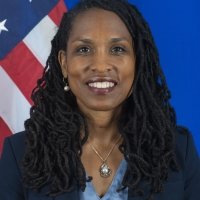Developing Climate Resilience: An Island Perspective
“Climate change is one of the greatest challenges of our time and it calls for a comprehensive and cooperative international approach like we’ve never seen,” said Jainey Bavishi, associate director for climate preparedness at the White House Council on Environmental Policy, at the Wilson Center on October 5. “The leadership of the island nations is essential; they punch well above their weight on this issue.”
Small-island developing states, or SIDS, are inherently vulnerable to climate impacts. They tend to be low lying with high population densities, have economies concentrated on the coast, produce weather-dependent exports, and rely on fossil fuel imports. But they are more than just the frontlines of climate change – they are hubs for adaptation.
“Needs [are] the mother of invention,” said Valerie Hickey of the World Bank. Islands’ unique vulnerabilities have prompted them to test innovative finance mechanisms and partnerships to mitigate climate risks and encourage adaptation. In the face of an existential threat, SIDS have also provided a moral compass for global climate negotiations over the last several years.
“The restricted scale, isolation, and sharp boundaries of islands create unique selective pressures, often to dramatic effect,” said Maxine Burkett, a professor of law at the University of Hawaii. Much like the evolutionary theory of adaptive radiation, their isolation encourages innovation to fill “unoccupied niches.” “Strange things happen on islands,” Burkett said, quoting archaeologist Colin Renfrew, allowing them to be truly “living laboratories.”
Incubators of Resilience
When Grenada, a southeastern Caribbean island nation, was struck by Hurricane Ivan in 2004, it suffered damage equivalent to 200 percent of GDP – 90 percent of homes were lost, said Ambassador to the United States Angus Friday. “We have had to completely rethink our economy,” he said. “We need to be able to find a way to change the narrative around resilience to one of economic opportunity.”
The Seychelles, a 115-island nation off the east coast of Africa whose mainland accounts for only 0.03 percent of its full territory, is spearheading the shift towards a “blue economy” that supports resilience. “We’re turning to the one resource that we have in abundance,” said Ambassador Ronny Jumeau of the Seychelles, “We’re turning to the oceans.”
“We’re turning to the one resource that we have in abundance”
The Seychelles is currently in conversation with the World Bank to issue “blue bonds,” a novel take on green bonds designed to fund the sustainable expansion of the fishing industry and conservation of marine resources by tapping into capital markets, said Jumeau. “This innovation on blue bonds,” said Hickey, “really has shown leadership not just for SIDS again, but for all coastal nations.”
Through a partnership with the Nature Conservancy, the Seychelles also completed a “debt for adaptation swap” with the Paris Club and South Africa this year. The swap relieves the Seychelles of $20 million in debt in return for their commitment to climate adaptation and marine conservation, including turning 30 percent of their exclusive economic zone into protected areas, said Jumeau.
Grenada plans to follow in the Seychelles’ footsteps, starting by converting a coastal master plan that maps coastal areas from the perspectives of resilience, economic investment, and tourism into a prospectus for international investors. “[We are] building up the argument as to why we should have a debt for nature swap…building up the argument for a blue bond,” said Friday.
Another World Bank initiative developed jointly with small islands is the Catastrophe Deferred Drawdown Option, a line of credit that can be accessed after disasters much faster than other insurance funds, provided the government has a disaster risk management plan in place, said Hickey. “This kind of financial engineering is cutting edge, and it’s all being led by the SIDS.”
“When One Succeeds, We Will All Succeed”
Cooperation between the public, non-profit, and private sectors in SIDS has also been a bright spot. In Trinidad and Tobago, the Australian multinational BHP Billiton, one of the world’s most profitable metal and petroleum mining companies, has put aside long-standing animosities with the community group Turtle Village Trust, and become a sponsor. Together they are working to conserve the habitats of leatherback and green turtles while promoting eco-tourism through aquaculture, habitat construction, and turtle-watching ventures, said Kalim Shah, an assistant professor of environmental policy at Indiana University.
“Where we share common problems, we can share common solutions,” said Kate Brown, executive director of the Global Island Partnership, an alliance of island governments that seeks to build sustainable and resilient communities through collaboration regardless of size or political status. “When one succeeds, we will all succeed.”
There’s an uncommon level of community trust
An uncommon level of community trust among SIDS “facilitates the flow of information,” said John Furlow, a climate change specialist at the U.S. Agency for International Development. “It lubricates the exchange of ideas.”
The Caribbean Challenge Initiative, a nine-country public-private coalition of Caribbean nations, is committed to sustainably managing 20 percent of the region’s marine and coastal ecosystems by 2020. A regional endowment inspired by the Caribbean Challenge Initiative, the Caribbean Biodiversity Fund, has also strengthened cooperation. In 2013 there were four national level conservation funds, said Brown. Today there are nine, with another expected to come into effect within a year.
This cooperation was showcased at the 47th annual Pacific Islands Forum Leaders Meeting in September, when heads of government adopted a new framework of voluntary guidelines for development in the Pacific that merges concerns about climate change and disaster risk reduction, said Brown.
ADAPT Asia-Pacific is helping SIDS access and manage multilateral adaptation finance. The initiative combines the Least Developed Countries Fund, the Green Climate Fund, and the Special Climate Change Fund, and has helped Pacific SIDS access over $70 million, said Shereen D’Souza, a foreign affairs officer at the U.S. Department of State.
Island Earth
Islands are not only banding together in the face of climate impacts, they are driving global action. Of the 18 member states of the National Adaptation Plan Global Network, which helps coordinate bilateral support of national adaptation planning, one third are SIDS, said Furlow.
SIDS “led the charge for an ambitious and balanced agreement in Paris,” said Bavishi. Through the creation of the “high ambition coalition,” a group of developed and developing countries, island governments pushed for “an iterative, upward spiral when it comes to emissions reduction commitments, a strong transparency system, and even early entry into force of the agreement, which we are seeing today,” said D’Souza.
“We need to define islands by their ambition”
“It was precisely this push by the SIDS that encouraged all countries to come along, to move beyond the comforts and constraints of a 1992 system that was clearly no longer adequate for addressing the magnitude of the crisis,” said D’Souza.
Jumeau emphasized that accurate knowledge of vulnerability and assets is central to the development of SIDS. Inventories of natural resources and local climate data are critical additions to economic indicators, like GDP per capita, he said, to give a complete picture of vulnerability. Relying on economic metrics alone to direct aid masks the disproportionate risks faced by islands given their size. Only $152 million of the $70 billion the World Bank invests annually in development (0.2 percent) goes to SIDS, according to Hickey.
In the Seychelles, a survey of marine areas is underway to address exactly which areas should be protected under the debt for adaptation swap, said Jumeau. “A sad story among SIDS is that they have a lot of ocean territory and that’s the thing they know the least of.”
With the proliferation of global efforts to build resilience to and mitigate climate change, we must remember that our smallest counterparts may prove to be our strongest leaders. They are “a microcosm of the global community,” said Burkett, “Island Earth.”
“We need to define islands by their ambition,” said Brown. “I think once we start doing that we are going to see a lot of change.”
Event Resources:
Written by Lynae Bresser, edited by Schuyler Null.
Sources: BHP Billiton, Caribbean Biodiversity Fund, Caribbean Challenge Initiative, Clean Technica, Global Island Partnership, The Guardian, NAP Global Network, Nature Conservancy, Pacific Islands Forum Secretariat, Turtle Village Trust, World Bank.
Cover Photo Credit: Damage to Haiti after Hurricane Sandy, October 2012, courtesy of Logan Abassi/UN Photo.
Speakers


Vice President, Sustainable Markets, Pact

Hosted By

Environmental Change and Security Program
The Environmental Change and Security Program (ECSP) explores the connections between environmental change, health, and population dynamics and their links to conflict, human insecurity, and foreign policy. Read more


Brazil Institute
The Brazil Institute—the only country-specific policy institution focused on Brazil in Washington—aims to deepen understanding of Brazil’s complex landscape and strengthen relations between Brazilian and US institutions across all sectors. Read more
